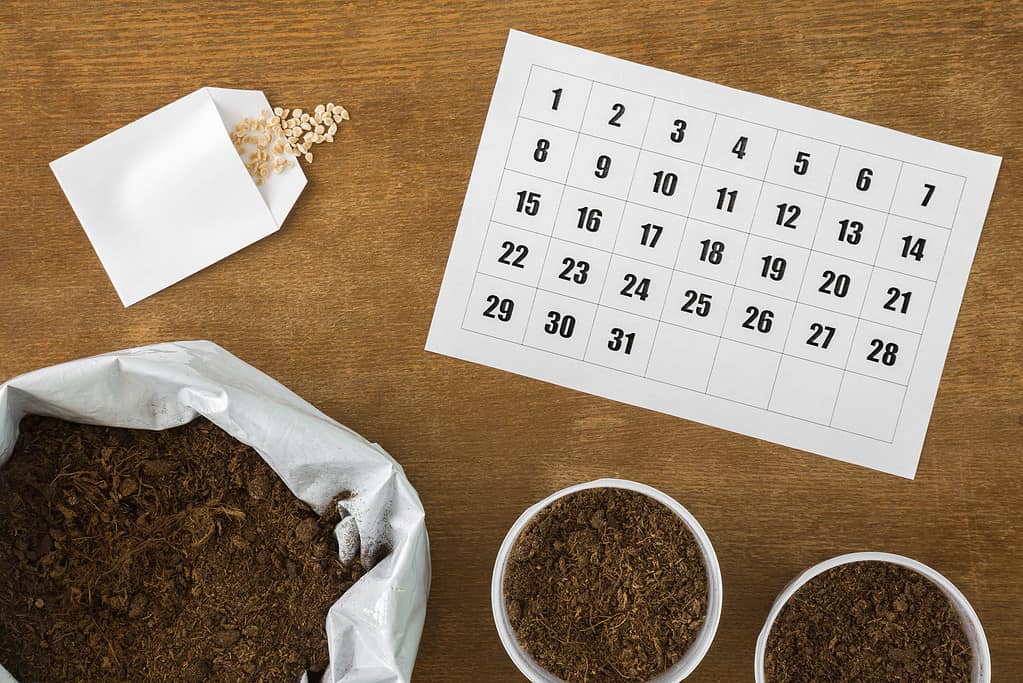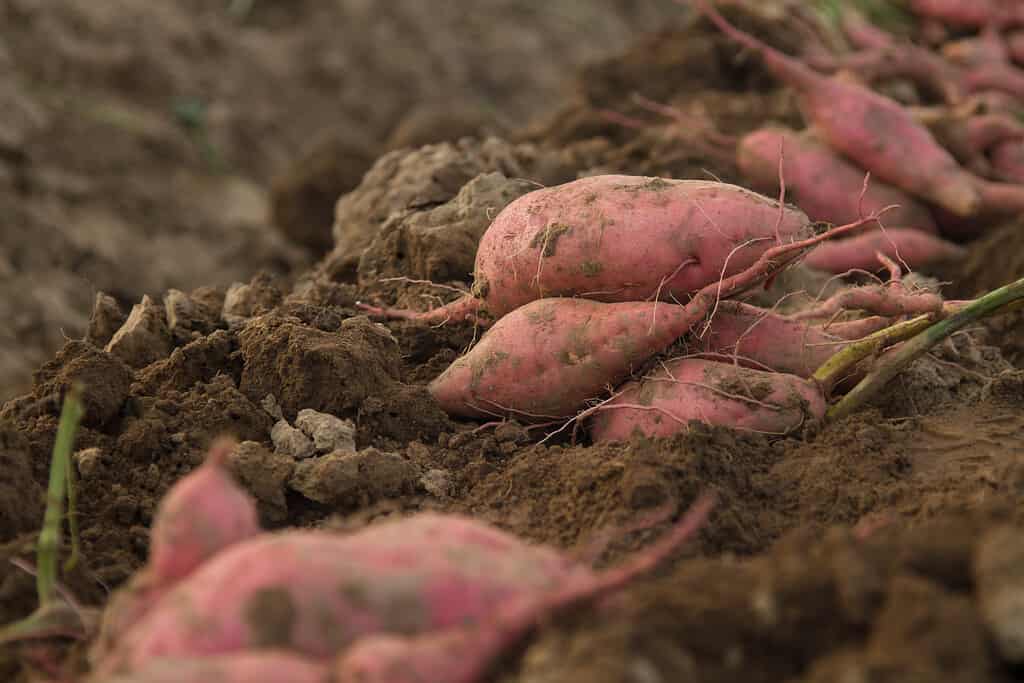Whether you are a first-time sweet potato grower or you have tried to grow them unsuccessfully in the past, there is one step that often trips people up. And that is the question of when to harvest these flavorful root vegetables. It’s understandable. Once we plant something and coax it to grow into a healthy plant, we become eager to start enjoying the bounty. However, with sweet potatoes, it can be difficult to tell just when that is. After all, the part you want to eat is buried under some soil. The good news is that there are three clear signals your sweet potatoes are ready to be harvested. We outline those below and provide some handy storage tips!
1. Harvest Window
Sweet potatoes have a very long growing season. They take about 100 to 140 days until they are ready to harvest. Keep an eye on your plants once you hit this window. They could be ready at any time! For most growing zones, these veggies will typically take closer to the 140-day mark. However, that is entirely dependent on factors like rainfall and how hot or cold the summer is. Feel free to start taking a peek at your sweet potatoes around the 100-day mark. Just know that it may take another month or so.

Make a note of the day (or days) you plant your sweet potato slips. You can track their progress on a gardening calendar.
©FotoDuets/ via Getty Images
2. Yellowing
When sweet potatoes are nearing their peak maturity, the leaves and vines will start turning yellow. As the plant dies, the sweet potatoes are finishing up their growth. You can (carefully) start checking the tubers once you see yellowing appear. Or you can wait until the entire plant has died back.
Many people are so eager to begin harvesting some sweet potatoes that they are willing to snag some on the smaller side. If you fall into this camp, you can start checking your sweet potato tubers around 100 days. Gently move the soil away from the roots to get a good glance. When they reach a reasonable and usable size, feel free to grab a few and replace the disturbed dirt.

Watch for yellowing leaves and vines on your sweet potato plants before harvesting.
©piyaset/ via Getty Images
3. It’s Getting Colder
This option isn’t the most scientific method to use. But when combined with the two indicators above, it should get you close to the harvesting mark. Since sweet potatoes take so long to mature, they will be closer to fall or actually fall before they are ready. So, as the air turns crisper, keep an eye on your plants. They will be prime for harvesting before the first frost as long as you planted them earlier in the spring.

Once the temperatures start falling and the leaves start turning, your sweet potatoes are likely almost ready to harvest.
©Smileus/ via Getty Images
How to Store Sweet Potatoes
Since sweet potatoes are a root vegetable, they will store very well and for an extended period. But there are some tips and tricks to ensure your storage process is successful.
1. Curing Stage
Any root vegetable that will get stored outside of the refrigerator for a long period needs to go through a curing stage. Essentially, this process allows the vegetable (in this case, sweet potatoes) to build up a tougher outer layer of skin. To cure root vegetables, shake off any excess dirt after you harvest them. But do not wash them! Then, move your haul into a warm, semi-shady spot. The ideal temperature for curing sweet potatoes is 80 degrees Fahrenheit and above.
Make sure that your curing location receives adequate airflow. The last thing you want is mold to set in. You’ll leave them there for at least a week or up to ten days. After that window has arrived, you are ready to put them in long-term storage.

When harvesting sweet potatoes, simply gently brush the dirt off. Don’t wash them before curing.
©piyaset/ via Getty Images
2. Storing Stage
While a root cellar is ideal for storing root vegetables like sweet potatoes, most people don’t have one handy. And that’s OK. There are other possible options. You can potentially use your basement or select the coldest room in your home. The idea is to ensure the root vegetables don’t experience high heat or serious temperature fluctuations. Ideally, this colder environment will also have slightly higher levels of humidity. Under the right conditions, your harvest will last approximately six months. Aim for roughly 60 degrees Fahrenheit, but don’t let the temperature drop below 50 degrees Fahrenheit.
The photo featured at the top of this post is © iStock.com/Koval Nadiya
Thank you for reading! Have some feedback for us? Contact the AZ Animals editorial team.







